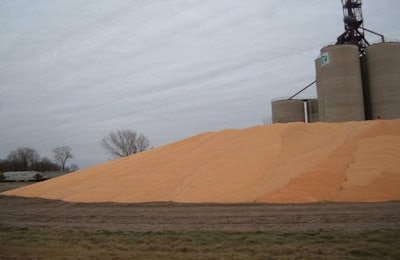
The past few years have seen considerable growth in the volume of grains and oilseeds traded around the world, and there have been significant changes in the origin and destinations of these commodities for animal feed and food use.
Grain and oilseed trade has increased by about 150 million metric tons (mmt) over the past five years, according to a new report from the Food and Agriculture group of Rabobank. That is more than 50 percent more than in the previous five-year period from 530 mmt in 2010-11 to 678 mmt in 2015-16. Average prices have declined to such an extent, however, that the value of the trade has fallen by 15 percent to about $200 billion in the trading year 2014-15.
Notable are the changes in the origins and destinations of the commodities, underpinned by currency fluctuations and the strength of growing demand.
Rapid growth in exports from South America
Exports – particularly of corn and soybeans – from South America has risen faster than those from North America. Brazil, for example, has achieved growth of more than 40 mmt or 73 percent over the past five years, equivalent to the highest average annual growth in exports over the study period of 12 percent. These developments have helped Brazil triple its corn exports and to become the world’s largest exporter of soybeans.
Strength of the U.S. dollar has held back exports there in favor of regions with weaker currencies, such as the Black Sea Region and the European Union. These 2 areas have achieved a 7 percent average annual increase in exports between 2010-11 and 2015-16, according to Rabobank.
Asia leads global demand for grain and oilseeds
Asia accounts for 43 percent of global imports of grain and oilseeds, making it the top destination for these commodities as well as the region achieving the highest growth. Other leading importing regions are the EU and the Middle East, followed by North Africa, Sub-Saharan Africa, South America and Central America.
Over the past five years, imports have grown most rapidly to India – by an average of 13 percent annually, albeit from a low starting point – and Sub-Saharan Africa, by 8 percent per year.
Rabobank analysts expect global grain and oilseed trade to continue to expand over the coming years as demand growth in Asia, the Middle East and Africa will rely ever more on imports. For the leading player, China, the trend is harder to predict as the government there addresses the massive quantities of domestic corn that have built up over recent years.
















